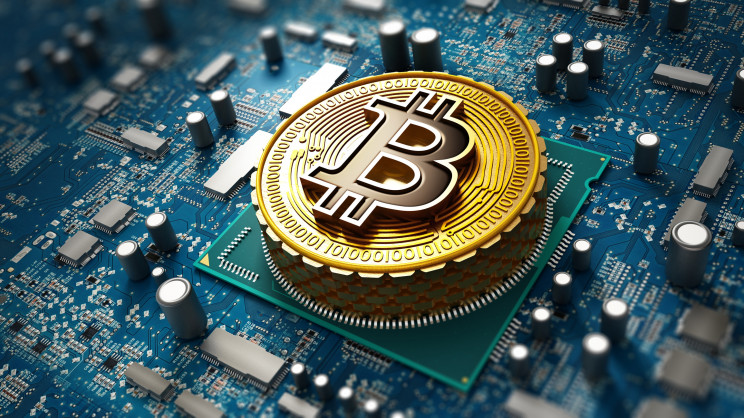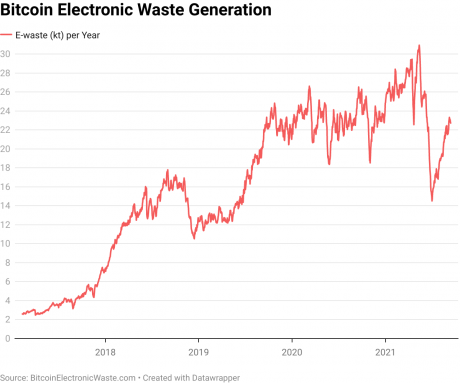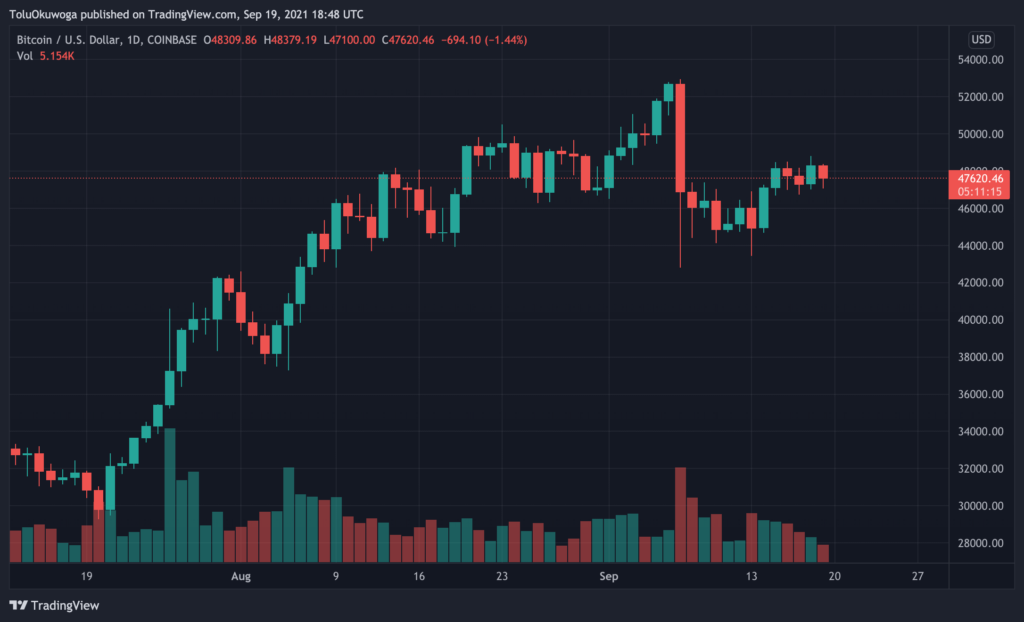
There have been many studies that have highlighted the carbon footprint and electricity usage problems of Bitcoin transactions. Founder of Digiconomist Alex de Vries and scientist at MIT’s Center for Energy and Environmental Policy Research, Christian Stoll, launched a brand-new research study that shines a light on the electronic waste that Bitcoin creates.
This study, “titled Bitcoin’s growing e-waste problem”, provides new insights into another major component of Bitcoin’s wasteful design.
The Electronic Waste Problem Of Bitcoin
Most research studies have actually overlooked the truth that Bitcoin miners go through a big quantity of brief hardware that might increase international electronic waste development.
“E-waste represents a growing threat to our environment, from toxic chemicals and heavy metals leaching into soils, to air and water pollutions caused by improper recycling.” According to the research study, a single transaction creates 272 grams of e-waste, the very same quantity of electronic waste as throwing two iPhone 12 minis in the bin. In 2020 the bitcoin network processed 112.5m transactions (compared with 539bn processed by traditional payment service providers in 2019).

“Bitcoin’s annual e-waste generation adds up to 30.7 metric kilotons as of May 2021,” they declare. “This number is comparable to the amount of small IT and telecommunication equipment waste produced by a country like the Netherlands.” This figure might increase to more than 64.4 metric kilotons of waste.
They also point out that the demand for mining hardware already today disrupts the global semiconductor supply chain, which is currently suffering a global shortage due to increased need in the coronavirus pandemic, as well as a US-China trade war and drought in Taiwan.

Additionally, Bitcoin mining has actually progressed from an easy activity done on a laptop computer to a complex and really pricey video game done through effective ASICs (application-specific incorporated circuits). These ASICs are specifically designed to mine crypto transactions. And as innovation modifications, miners need to continuously change their ASICs with more recent, more effective ones to remain competitive. Therefore, these single-purpose ASIC chips quickly become waste. According to the scientists, “The lifespan of bitcoin mining devices remains limited to just 1.29 years,”
Researchers in Europe and the U.S. also claim that miners have been dumping tens of thousands of tonnes every year of ASIC rigs and contributing to the ever-growing environmental challenge.
Alex and Stoll likewise alert that the e-waste issue will most likely grow even more if the cost of the cryptocurrency continues to increase because it will incentivize additional financial investment in and replacement of ASIC hardware.
If the community were to try to reduce its e-waste problem, the paper concludes, it would need to replace the bitcoin mining process in “its entirety with a more sustainable alternative,” One of those alternatives is “proof of stake” instead of “proof of work”, as an experimental replacement. “The first miner who finds a PoW [proof of work] that satisfies predetermined conditions broadcasts the block to all nodes in the network. The receiving nodes express their acceptance of the new block by building on top of it”, the paper explains.


















